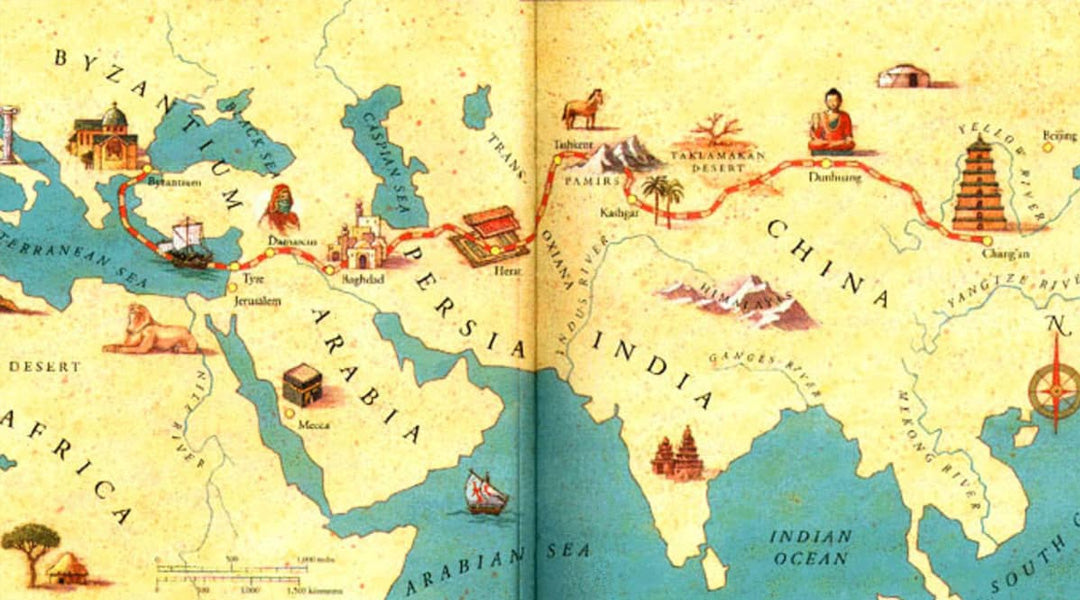
What Product Led China out of Isolation?
CLinaShare
When we think about which commodity made China come out of isolation, many people's first reaction will be tea, porcelain or spices. In fact, silk was one of the important commodities that made China famous. Not only did it satisfy the Western world's curiosity about the mysterious East, but it also shaped the pattern of global trade and cultural exchanges over the course of history.
Was China really “isolated from the world”?
Before we discuss this, let's dispel a common misconception: ancient China was not completely isolated. Although the central government pursued a relatively conservative foreign policy at certain times, commercial exchanges of varying scales still took place between coastal and border regions and the outside world by sea or land.
However, it was the “Silk Road” that was born of silk production that formally connected China with the Mediterranean, the Middle East and even Europe, forming a large-scale network of trade and cultural exchange.

The Silk Road: a major commercial artery that changed the world
A trade revolution:
Silk was once the world's most sought-after luxury product. European and Middle Eastern aristocrats craved it, and the silky fiber was even seen as a symbol of status and power. One of the answers to the question “what product made China come out of isolation?” must be silk, because it directly attracted a large number of caravans and emissaries to travel to the East and knock on the door of China.
A blend of culture and technology:
The Silk Road did not just transport silk, but also provided opportunities for the spread of China's cutting-edge technologies such as paper, printing, gunpowder and porcelain. In return, Western astronomy, mathematics and religious thought entered China. The Silk Road can be said to have been an important artery for mutual understanding between the East and the West in ancient times.
Diplomatic and political connections:
The development of trade often led to political and diplomatic interactions. Whether it was the Han Dynasty's alliance with the countries of the Western Regions or the later exchanges between the Tang Dynasty and Central Asia, the silk trade played a lubricating role, allowing China to maintain an active presence on the international stage.
Why silk, and not other commodities?
Unique craftsmanship and quality
The production of silk requires multiple processes such as silkworm farming, spinning and dyeing. Ancient China had accumulated profound technological advantages in these fields, which were difficult for other regions to replicate for a time.
High added value
Tea and porcelain were also highly prized, but in the eyes of European princes and nobles at the time, the magnificence, lightness and texture of silk were unique and could often be exchanged for high profits.
Cultural imagination
To the West, silk was not just a piece of fabric, but also a symbol of the distant East, both mysterious and luxurious. This “imagination” made traders and explorers willing to overcome difficulties and travel to China to find supplies.
Not just trade, but influence across time
When people search for “what product made China come out of isolation,” they are also asking: How did China gradually move from a regional dynasty to the world stage? Throughout history, silk has contributed more than just trade in gold and silver. It has also been behind cultural, religious, and ideological exchanges around the world.
Those who set foot on the Silk Road, whether they were merchants, monks, or envoys, have all written a precious page in the interaction of human civilization.
From “silk” to “digital Silk Road”
Surprisingly, the concept of the Silk Road still has contemporary significance. Today, the Belt and Road Initiative proposed by China is a modern reconstruction of the ancient Silk Road. Although silk is no longer the core commodity, its spirit and function seem to be in the same vein: relying on the interconnection of transportation, communication, and data information to achieve deeper international cooperation.
If you are still wondering “what product made China come out of isolation,” silk is undoubtedly one of the best answers. It not only opened the door to trade between the East and the West, but also gradually moved China to the center of the world over the long course of history. Through silk, people broke through the barriers of geography and culture, and the embryonic form of globalization has since emerged. Perhaps it was this light fabric that allowed ancient China to leave an indelible mark on the world stage.
Tips: In today's digital age, we can look back on the glorious years of “silk” and understand the driving force and process behind ancient China's “coming out of isolation”. This look back may provide a different kind of inspiration for globalized interactions and cross-cultural exchanges in contemporary society.